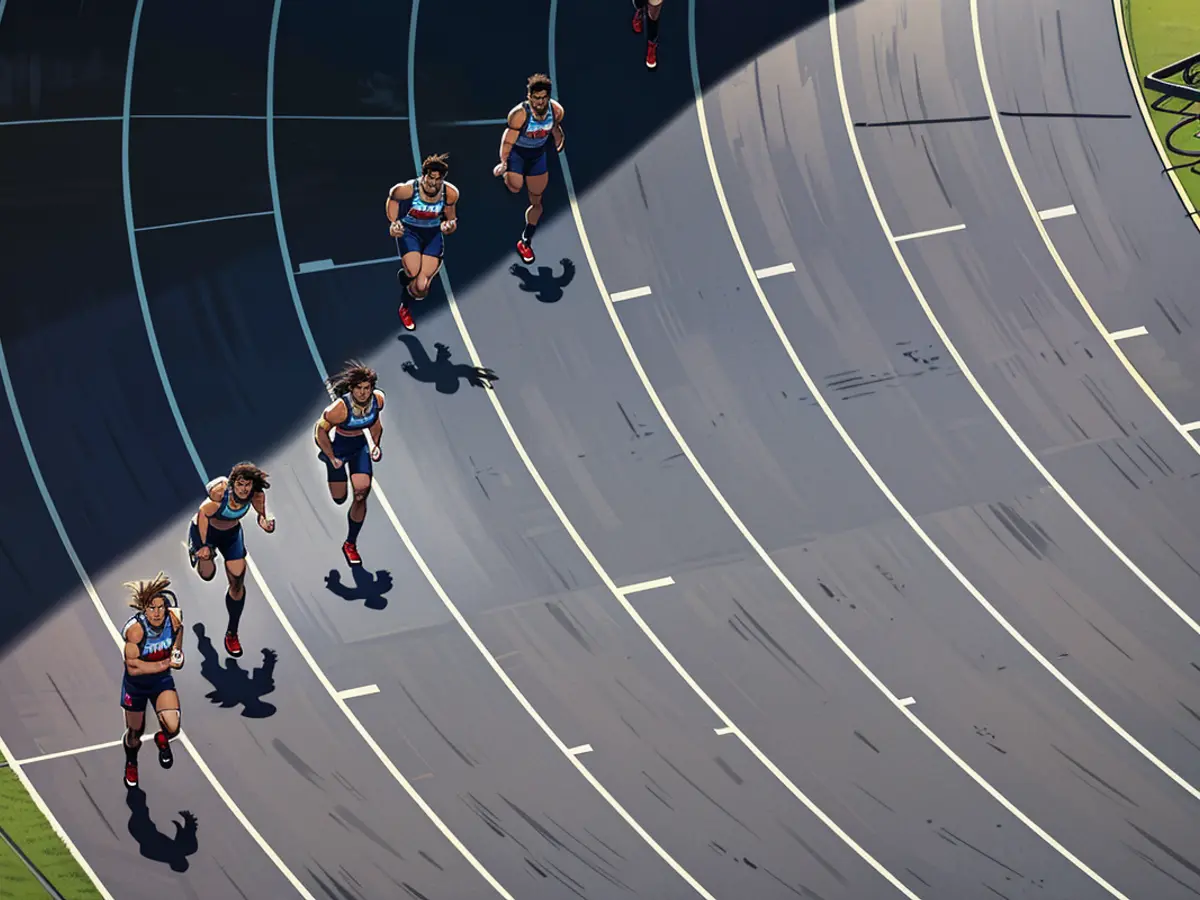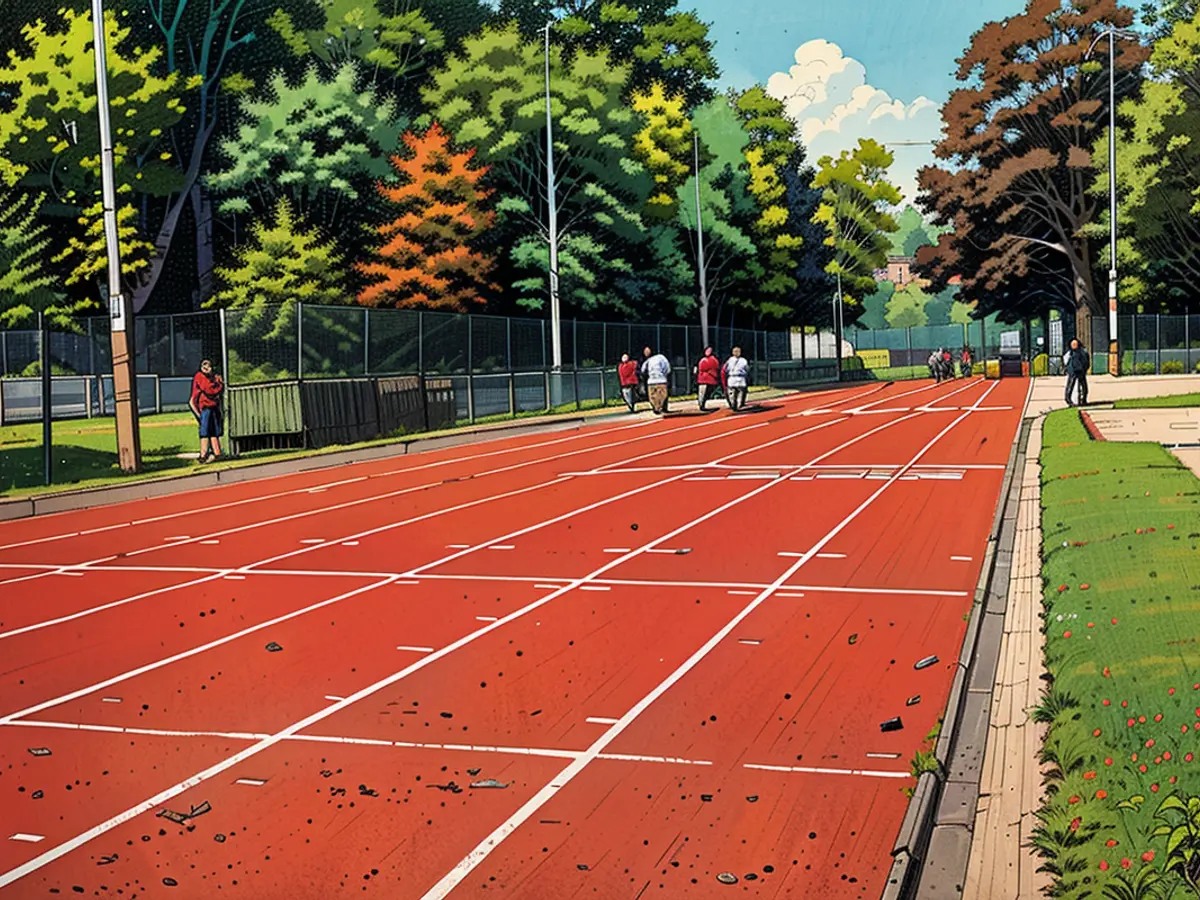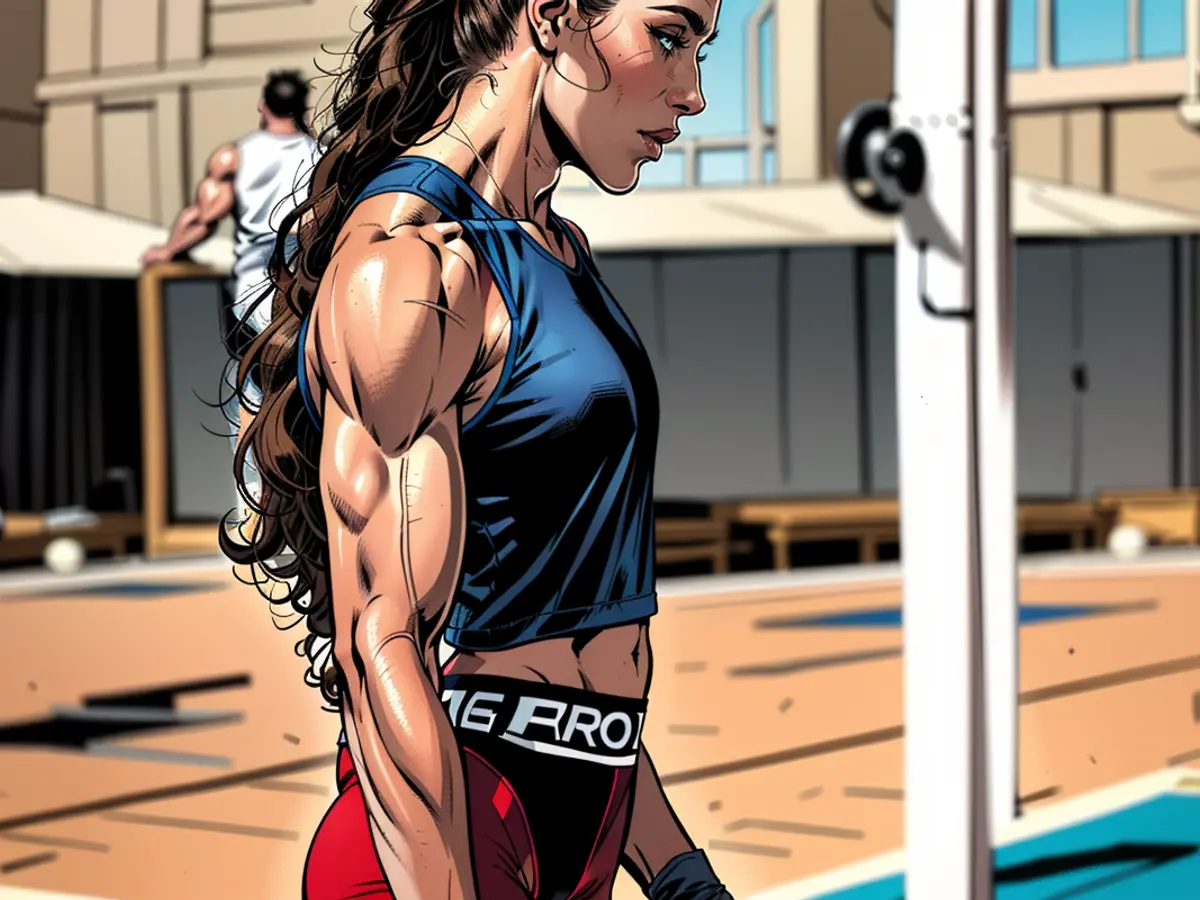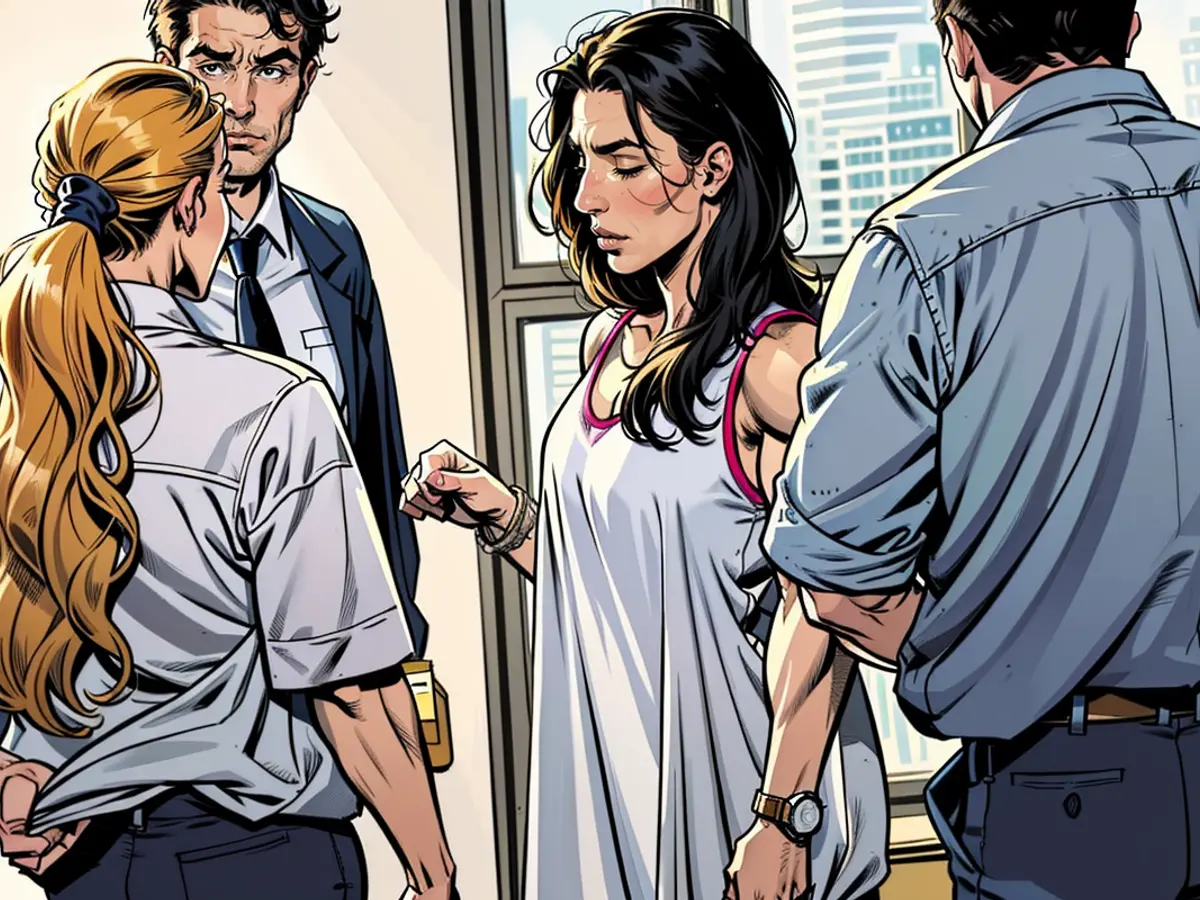France’s forgotten athletes: As the world tunes in to the Olympics, many of Paris’ poorer suburbs see little benefit
Fans who want to watch an event like the 100m final on August 4 will have to shell out between $300 to more than $1,000 for a ticket.
But if you walk a short distance away from the sparkling Stade de France, which is about six miles from downtown Paris, you’ll find a very different world.
Seine-Saint-Denis, the northeastern department – roughly equivalent to a county in the US – where the stadium is located, is the poorest in mainland France, and for many of its 1.7 million residents, accessing facilities even close to the caliber of the Stade de France is a pipe dream.
Olympic organizers like to pride themselves on the legacy of the Games and the “long-term benefits” they say they create for the host city and “its people.”


Paris had pledged to revitalize Seine-Saint-Denis, home to many “banlieues,” poor and working-class suburbs with high immigrant populations, as part of its bid for the Games, Stéphane Troussel, the president of Seine-Saint-Denis Departmental Council, told CNN.
Troussel said this pledge led to a joint bid – Paris-Seine-Saint-Denis – that was supposed to heal deep societal divisions and restore links to the city fractured after the 2015 terrorist attacks, which started with a series of explosions outside the Stade de France.
French and Olympic officials made sweeping promises about the legacy of the Games – that the residents of Seine-Saint-Denis would be “at the heart of the Olympic project,” according to a press presentation from Paris 2024.
Investment fueled by the Olympics has poured into Seine-Saint-Denis to fund improved public transit, more green spaces and better-quality housing, Troussel said.
“We spend our time inaugurating” new developments, Troussel said. “It’s not the completion, but it’s a real tipping point. We have a decade of transformation before us that will change the place of Seine-Saint-Denis with respect to Greater Paris and Île-de-France.”

Speaking to local residents at the inauguration of a new aquatics center in Saint-Denis, a banlieue in Seine-Saint-Denis, French President Emmanuel Macron made this ambition clear when he said, “After the Games, this will be yours.”
But for some locals wanting to practice track and field, the legacy from the Games appears more mixed.
Local clubs falling through the cracks
AS Bondy’s track is almost 25 years old and showing signs of its age.
Laurence Baillargeau, who works at the club in Bondy – a town east of the Stade de France, famed for being where Real Madrid soccer superstar Kylian Mbappé was raised – told CNN it is riddled with holes. With a lack of resources to renovate it, there’s a risk of injury for athletes, and although no one has been hurt so far, “we’re crossing our fingers” it doesn’t happen, she said.
Baillargeau said that AS Bondy got no funding from the Games. Photos of the track seen by CNN show holes littered with cigarette butts, torn patches and grass pushing through the surface.
“With the track damaged, we can no longer organize competitions,” Baillargeau said.
Fewer facilities and resources
Seine-Saint-Denis has three times fewer training facilities per 10,000 residents than the national average – 16 as compared to 45, Troussel said.
The department also ranks 103rd out of the 105 French regions and territories in terms of the number of facilities, according to a report on regional investment linked to the Olympics.
Funding for track and field facilities is entirely dependent on local governments.
“Inequalities and financial disparities have a cumulative effect. The communes of Seine-Saint-Denis sometimes have a poor population with more limited means that sometimes prevents them from building facilities or renovating facilities sufficiently,” Troussel said.
There’s also a divide between big and small clubs. Larger ones get substantial subsidies, while smaller clubs are left with scraps. For example, CA Montreuil, the 20-time French track and field champion, received $492,000 (€450,000), while Saint-Denis Émotion received $32,800 (€30,000), according to Troussel’s office.
“I think it’s a longtime problem because we must not forget that it’s not a professional sport, it’s an amateur one, so it’s more complicated to structure, to get financing, to get subsidies,” said Sandra Ribeiro, a former pole-vaulter for Portugal in the 2008 Beijing Olympics who grew up in Aulnay-sous-Bois, another banlieue in Seine-Saint-Denis.
With her sister, Ribeiro started Perfe-o, a business which supports high-level athletes with career advice, training and financing.
“It’s easier to support champions when there are subsidies. It’s more difficult for a smaller club to support elite athletes if they don’t have the means to do so,” Ribeiro told CNN Sport.
Ribeiro says this means athletes frequently move to larger clubs because it’s their only way to train at a high level.
The Paris 2024 Organizing Committee did not respond to multiple interview requests from CNN for this story.
Some clubs see benefits
In contrast to the aging track in Bondy, CSME Athlétisme, in the commune of Épinay-sur-Seine, now has “everything it needs,” according to club president Cedric Jacqué. The club was renovated with funds from the Games.
But before the renovations, conditions were dire.
“We had a track outside, but it was in very bad shape,” Anna Viallard, a coach at the club, said. “There were blisters that were forming on the track. Water was seeping under the track, and it was unusable.

“The children were slipping in the jumping pit, the sandpits were in a catastrophic state, the same with the pole vault.”
Viallard tells CNN that the Games are put on “to dazzle at the national and international levels.”
But residents of the communities around the Stade de France feel left behind.
To tackle the problem, Seine-Saint-Denis created the “Generation Games” financial package to subsidize ambitious talent in the area.
One of the athletes who benefited is Mallory Leconte, a runner who helped Team France qualify for the 4x100m Olympic relay event but was not selected in the final group competing in the Games.

“They were helping us financially, and so did our clubs,” Leconte said. “In exchange, we would become ambassadors for the region, to talk and tour in schools, for example. I received $3,280 (€3,000) from the Seine-Saint-Denis local council and $10,900 (€10,000) from the Île-de-France region (the greater area of Paris).”
However, the Games also created problems for her own preparation. Because her club, Saint-Denis Émotion, is being used as a warm-up area for athletes competing at the nearby Stade de France, it closed two years ago for renovations. She and other athletes were forced to travel to other clubs to train.
“We no longer had a stadium. Therefore, we had to train on concrete. We have to go to a private gym now. We used to have our own equipment there. Also, we had to change facilities multiple times,” Leconte said.
Coaching ‘practically alone’
A shortage of coaches at smaller clubs is another challenge for athletes training to compete at a higher level, especially for track and field, Viallard said.
Finding qualified instructors in Île-de-France is not easy.
At CSME Athlétisme, even with its comparatively greater resources, Viallard says she is “practically alone” in coaching the club’s 180 members.
“I am tired,” she said. “I can’t coach in good conditions because I can’t be in two places at once and I can’t watch everyone.”
Viallard says some of her athletes are beginning to qualify at the regional level, but she knows she “doesn’t have the means to support them because I can’t focus on one person when I have a group of 30 who are also counting on me to take care of them. It’s very frustrating because recently I have lost one of the best French athletes.”
‘A sport where there’s money’
The investment in sporting facilities connected to the Games has also focused particularly on swimming facilities, in a region where over 60% of children entering secondary school do not know how to swim.
But outside of the Games, swimming and track and field are not where the money goes.
For the residents of Bondy, soccer is everything.
Mbappé – one of the sport’s biggest stars and captain of France’s national soccer team – is from Bondy, and the children who live there dream to play like him.

Everyone CNN interviewed agreed that soccer is the privileged sport in Seine-Saint-Denis, both in terms of interest and investment. Troussel’s office told CNN that soccer is the most subsidized sport, with the area’s more than 100 clubs receiving a total of around €700,000 per year.
Often, the two go hand-in-hand, especially when it comes to infrastructure for sports.
“Everything is done to welcome the most soccer players possible, to the detriment sometimes of a number of sports,” Viallard said.
“It’s a sport where there’s money,” added Viallard.
Soccer can be played on artificial turf, which is easier to train on and cheaper to maintain than grass. But for track and field, the surface can change how athletes are able to practice.
This is the case at CSME Athlétisme, and the club has had to adapt. Viallard says the club uses rubber discuses and javelins with rubber tips to reduce the wear and tear on the turf and keep athletes safe from injury. Members of AS Bondy can’t do these sports at all, Baillargeau said.

While shot put is supposed to be done in a concrete circle, Viallard says her athletes must travel further away to a gravel field designed for the French sport pétanque, where the surface could increase the risk of slipping.
Athletes are highly impacted by these conditions, before and after renovations.
But it doesn’t affect their motivation, says 15-year-old Keilyne Ait Mouffok.
“When they were puddles, we would avoid them. So, it didn’t bother us so much. However, when we would train for 4x200m, it was more problematic,” Mouffok, who trains at CSME Athlétisme, said.
She said she doesn’t mind sharing the facilities with other clubs either.
As for the legacy the Games will leave behind, former pole vaulter Ribeiro thinks the new facilities will be well-maintained long after the Olympics are over because residents have wanted the upgrades for so long.
Troussel said a former politician in London gave him important advice when it came to the Games: “The legacy, the impact on your region and its residents, it is for you to take care of. It is on you to leave nothing out, to let nothing go. It is on you to advocate for that.”
Despite the investment in sporting facilities for the Olympics, smaller track and field clubs in Seine-Saint-Denis, like AS Bondy, have not seen any benefits. The club's aging track, which is riddled with holes, puts athletes at risk of injury and prevents them from hosting competitions.
Funding for track and field facilities in Seine-Saint-Denis is entirely dependent on local governments. With limited resources, smaller clubs struggle to maintain and renovate their facilities, leading to a lack of proper facilities for aspiring athletes.








